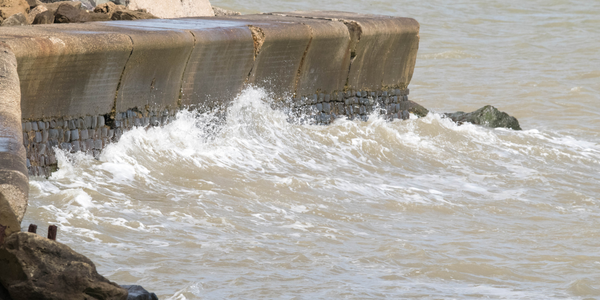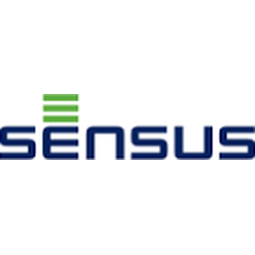下载PDF
City of Lakeland Improves Flood Prevention Capabilities with IoT Technology

技术
- 功能应用 - 远程监控系统
- 网络与连接 - 网关
- 传感器 - 流量计
- 传感器 - 液位传感器
适用行业
- 城市与自治市
适用功能
- 商业运营
用例
- 泄漏与洪水监测
挑战
对于佛罗里达州莱克兰市的科学家来说,手动监测湖泊水位以防止洪水泛滥是一项耗时且耗费资源的任务,尤其是在近四个月的雨季期间。
“保持平衡的水位对于避免住宅区发生洪水并为旱季保存足够的水至关重要,”莱克兰市湖泊和雨水部门经理 Laurie Smith 说。 “我们的技术人员必须在 11 个湖泊之间来回行驶,并确保水位不会太高。”
客户
莱克兰市
关于客户
-
解决方案
该市的工作人员知道他们需要一种更好的方法来监测水位,于是求助于 Xylem 品牌 Sensus,利用创新的物联网 (IoT) 技术实现了这一目标。物联网提供了前所未有的高级连接功能,让市政当局和社区重新思考利用现有和未来技术投资(例如 FlexNet® 通信网络)来改善他们所服务的公民生活的潜力。
作为 Sensus 的长期客户,Lakeland 团队利用他们对 FlexNet 系统的投资,使用 Sensus® Smart Gateway 传感器接口在两个湖泊创建远程水监测站。
“我们的 FlexNet 系统拥有构建远程监控解决方案所需的一切,使我们无需实施新的基础设施就能节省大量成本,”Smith 说。
借助 Smart Gateway 和 FlexNet 系统,莱克兰市的科学家们现在能够远程实时收集水位数据。技术人员可以识别湖泊何时面临洪水风险,并直接驱车前往受影响的湖泊打开或关闭已安装的防洪结构,从而节省时间和运营成本。
收集的数据
Water Flow Rate, Water Level
运营影响
相关案例.

Case Study
Turning A Stadium Into A Smart Building
Honeywell created what it called the “intelligent system” for the National Stadium in Beijing, China, turning the venue for the opening and closing events at the 2008 Summer Olympics into a “smart building.” Designed by highly controversial artist Ai Weiwei, the “Bird’s Nest” remains one of the most impressive feats of stadium architecture in the world. The 250,000 square meter structure housed more than 100,000 athletes and spectators at a time. To accommodate such capacity, China turned to Honeywell’s EBI Integrated Building Management System to create an integrated “intelligent system” for improved building security, safety and energy efficiency.
.png)
Case Study
Smart Street Light Network (Copenhagen)
Key stakeholders are taking a comprehensive approach to rethinking smart city innovation. City leaders have collaborated through partnerships involving government, research institutions and solution providers. The Copenhagen Solutions Lab is one of the leading organizations at the forefront of this movement. By bringing together manufacturers with municipal buyers, the Copenhagen Solutions Lab has catalyzed the development and deployment of next-generation smart city innovations. Copenhagen is leveraging this unique approach to accelerate the implementation of smart city solutions. One of the primary focus areas is LED street lighting.

Case Study
Buoy Status Monitoring with LoRa
The Netherlands are well-known for their inland waterways, canals, sluices and of course port activities. The Dutch Ministry of Infrastructure indicates that there are thousands of buoys and fixed items in and near water environments that would profit from IoT monitoring. One of the problems with buoys for example, is that they get hit by ships and the anchor cable breaks. Without connectivity, it takes quite some time to find out that something has happened with that buoy. Not to mention the costs of renting a boat to go to the buoy to fix it. Another important issue, is that there is no real-time monitoring of the buoys at this moment. Only by physically visiting the object on the water, one gains insight in its status.

Case Study
China Mobile Smart Parking
Smart Parking, powered by NB-IoT technology, is making it easier for drivers to find free parking spots. Cities can better manage their parking assets and maximize the revenue available to them as a result. Drivers searching for parking create congestion and pollution by circling and hunting for available parking. Smart Parking services are able to significantly ease these problems by guiding a driver directly to a parking space.

Case Study
Barcelona Case Study
Barcelona’s heavy traffic and its associated high levels of pollution were the primary factors that motivated some companies and universities to work on strategies for improving traffic in the city centre. Bitcarrier is one of the technologies involved in the In4Mo Project, whose main objective is to develop the applications that form the core of smart mobility, one of the fundamental pillars of the smart city concept.






